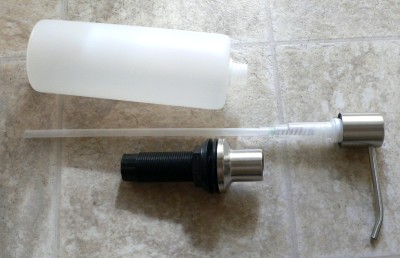
|
RV Sinks and associated projects |

|
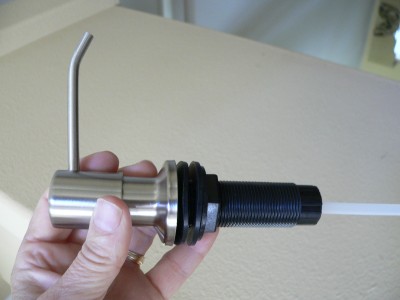
|

|
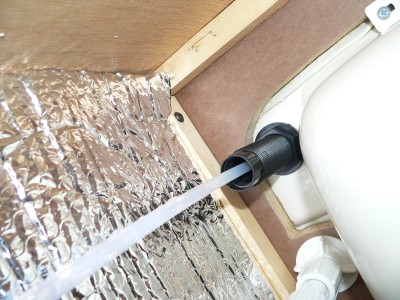
|
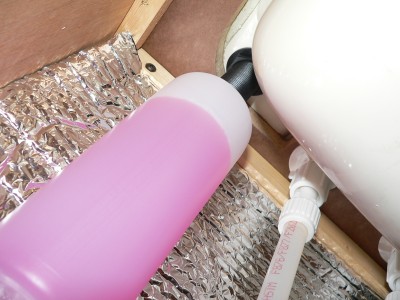
|
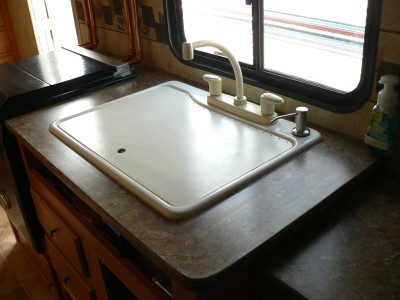
|

Sink cover lifted up |
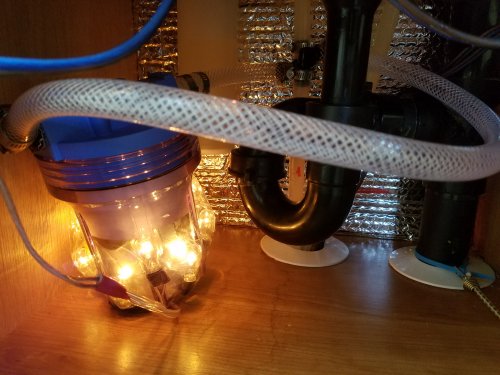 This is scary. I have placed aluminum foil directly under all light bulbs to distribute the heat.
Otherwise, a hot bulb could melt the plastic. This is scary, I can have no hot spots.
This is scary. I have placed aluminum foil directly under all light bulbs to distribute the heat.
Otherwise, a hot bulb could melt the plastic. This is scary, I can have no hot spots.
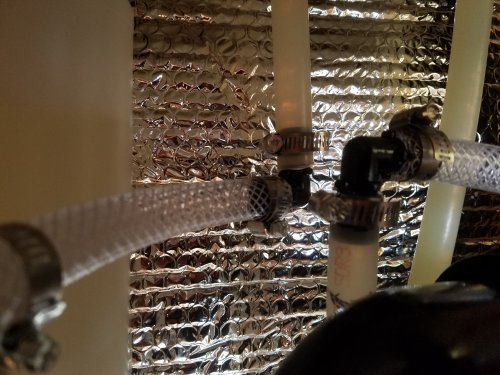 The installation is easy: just cut the PEX on the hot water side. Insert two 90 degree barbs.
I had to heat both the PEX and the vinyl to make it easier to work with.
The hot water side of the filter must be as short as possible, here only 4 or 5 inches, before going directly up, and into the faucet.
I disconnected the PEX under the faucet to make it easier to install the fittings. Do NOT disconnect the adapter to the faucet connector.
The faucet connector has a large soft rubber bushing that is forgiving and designed to be taken onn and off. Not the adapter!
The installation is easy: just cut the PEX on the hot water side. Insert two 90 degree barbs.
I had to heat both the PEX and the vinyl to make it easier to work with.
The hot water side of the filter must be as short as possible, here only 4 or 5 inches, before going directly up, and into the faucet.
I disconnected the PEX under the faucet to make it easier to install the fittings. Do NOT disconnect the adapter to the faucet connector.
The faucet connector has a large soft rubber bushing that is forgiving and designed to be taken onn and off. Not the adapter!

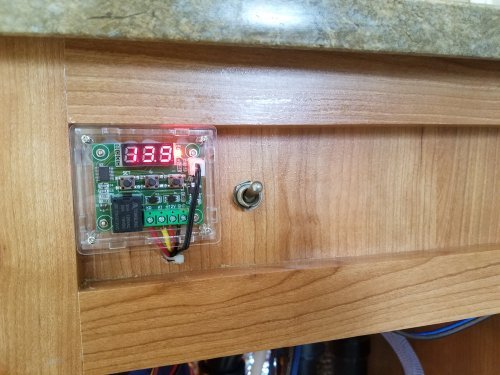 Here is the Thermostat and the switch.
I was going to have just a mechanical thermostat with no electronics.
But for less money, under $10 bucks, you can have an electronic digital thermostat. Thought I would try it.
Here is the Thermostat and the switch.
I was going to have just a mechanical thermostat with no electronics.
But for less money, under $10 bucks, you can have an electronic digital thermostat. Thought I would try it.
 Anyway, trying to figure out how to insulate this thing...
Anyway, trying to figure out how to insulate this thing...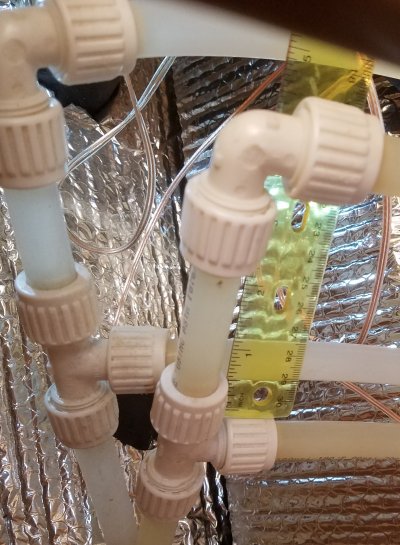 My PEX Lines are half inch, (10/16 inch OD, and 1/2 inch ID).
My PEX Lines are half inch, (10/16 inch OD, and 1/2 inch ID).
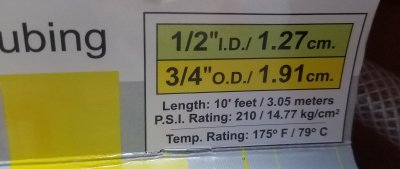
 1/2 inch barbs work out great for vinyl too.
This works out well with vinyl, for both the half inch (3/4 inch OD, 1/2 inch ID) size, and also the smaller three-eights (5/8 OD 3/8 ID) size .
Vinyl stretches, and either size works just fine with a 1/2 inch barb.
1/2 inch barbs work out great for vinyl too.
This works out well with vinyl, for both the half inch (3/4 inch OD, 1/2 inch ID) size, and also the smaller three-eights (5/8 OD 3/8 ID) size .
Vinyl stretches, and either size works just fine with a 1/2 inch barb.